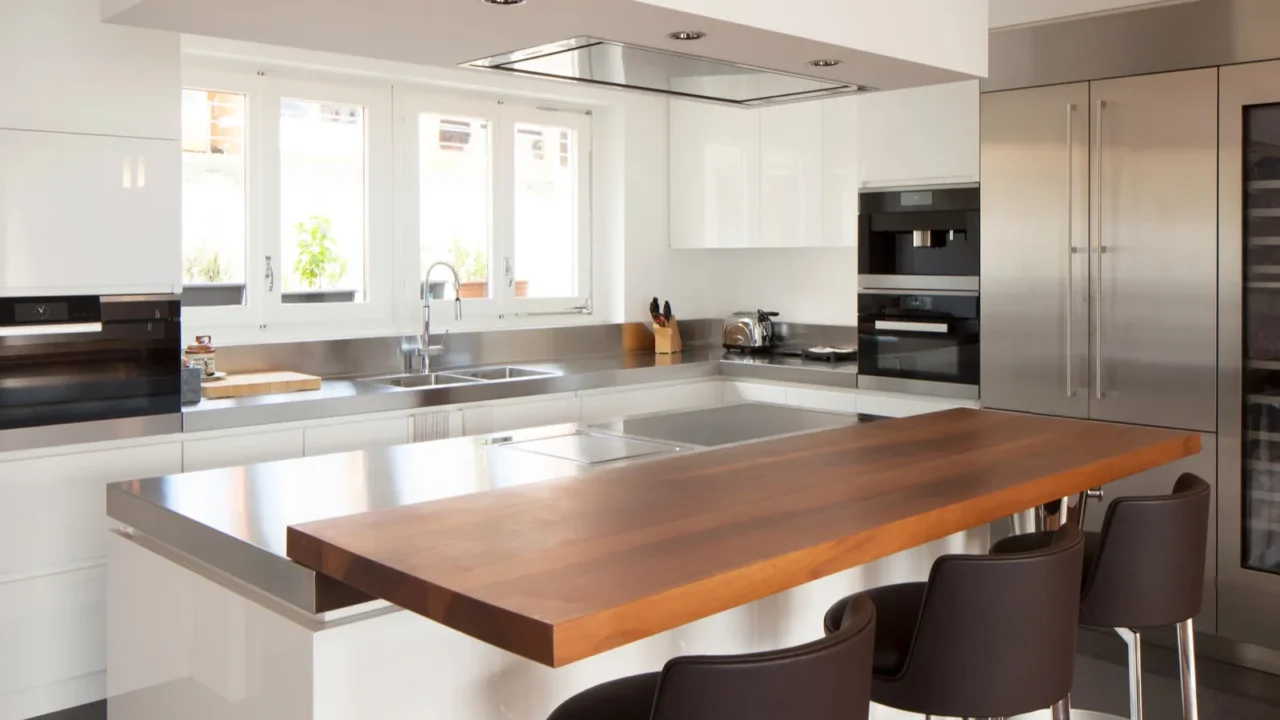
Small Kitchens, Big Zen Energy
A Japanese-inspired kitchen, when paired with sustainable practices, provides a calm and environmentally conscious space that is ideal for small spaces, cooking and living in harmony with the natural flow of a lifecycle.
Here’s how to create a sustainable kitchen that respects the environment while still looking gorgeous by incorporating Japanese-inspired elements.

Natural Wood Cabinets
Wood is commonly used as a design element in Japanese kitchens. This is because it is among the strongest and most resilient materials and extremely versatile
Making it ideal for building cabinets, which need to be durable. This material is perfect for interior design projects because it comes from a renewable source.
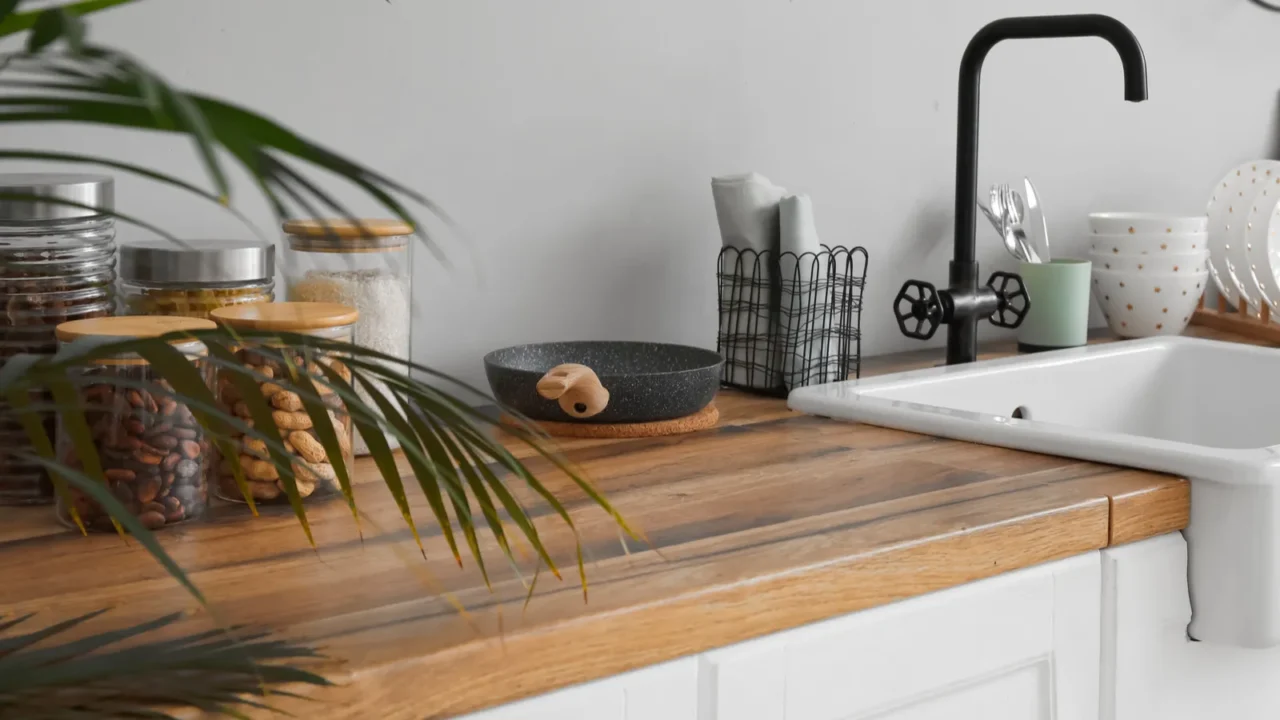
Bamboo Countertops
Bamboo is a common material used in Japanese kitchens. All for the right reasons. They are a flexible renewable resource that is also reasonably priced and visually appealing.
They make excellent and aesthetically pleasing countertops. Bamboo countertops are definitely worth the investment because they are simple to clean and maintain.

Shoji Screen Pantry
Shoji screen doors are a trademark of Japanese interior design and are exclusive to Japan. Shoji screens are easy to install because they are lightweight, translucent panels.
It adds a little character to an otherwise boring pantry. It is more efficient and time-saving because of the sliding feature that makes it much easier to access your food.
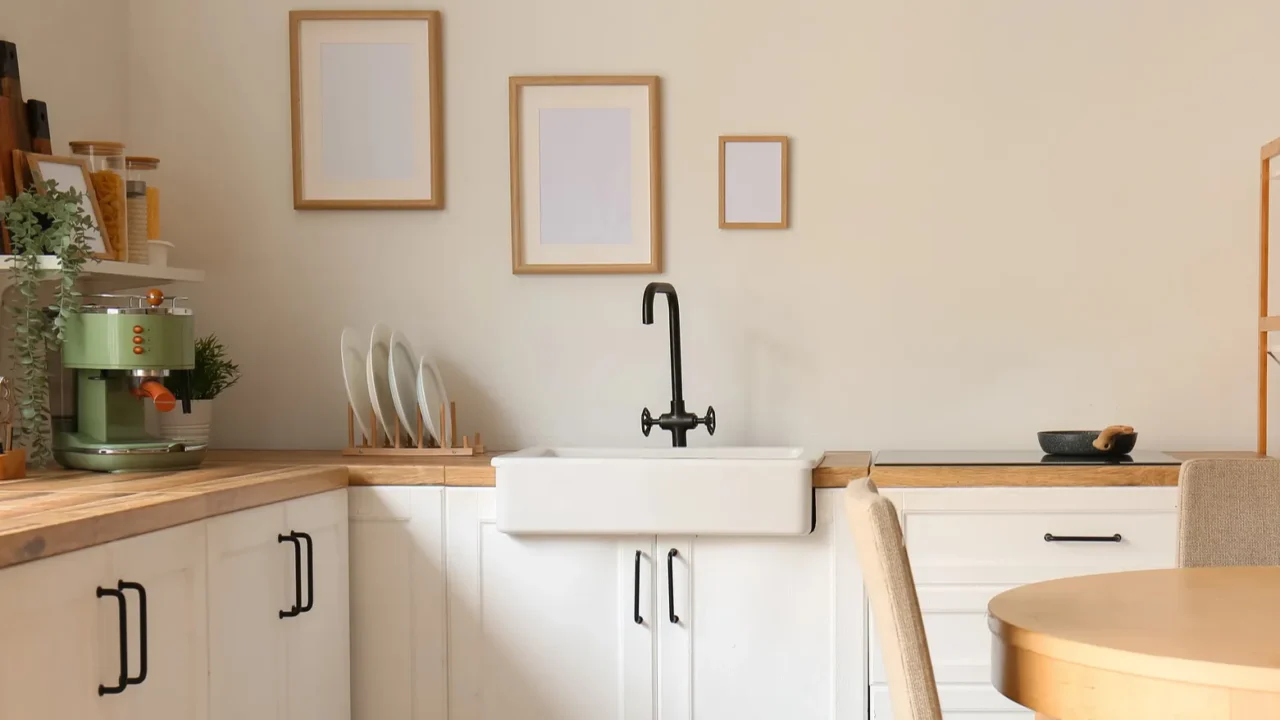
Color Palette
A Japanese-inspired kitchen, especially one that uses upcycled materials, the color palette is key to creating a peaceful, minimalist vibe. In Japanese design, colors are selected to mirror nature, simplicity, and balance.
The color scheme typically features natural tones that bring a calming, earthy feel, connecting the space to the outdoors and creating a harmonious environment. Such as Taupe, Warm Greys or Off-White for Subtle Contrast.
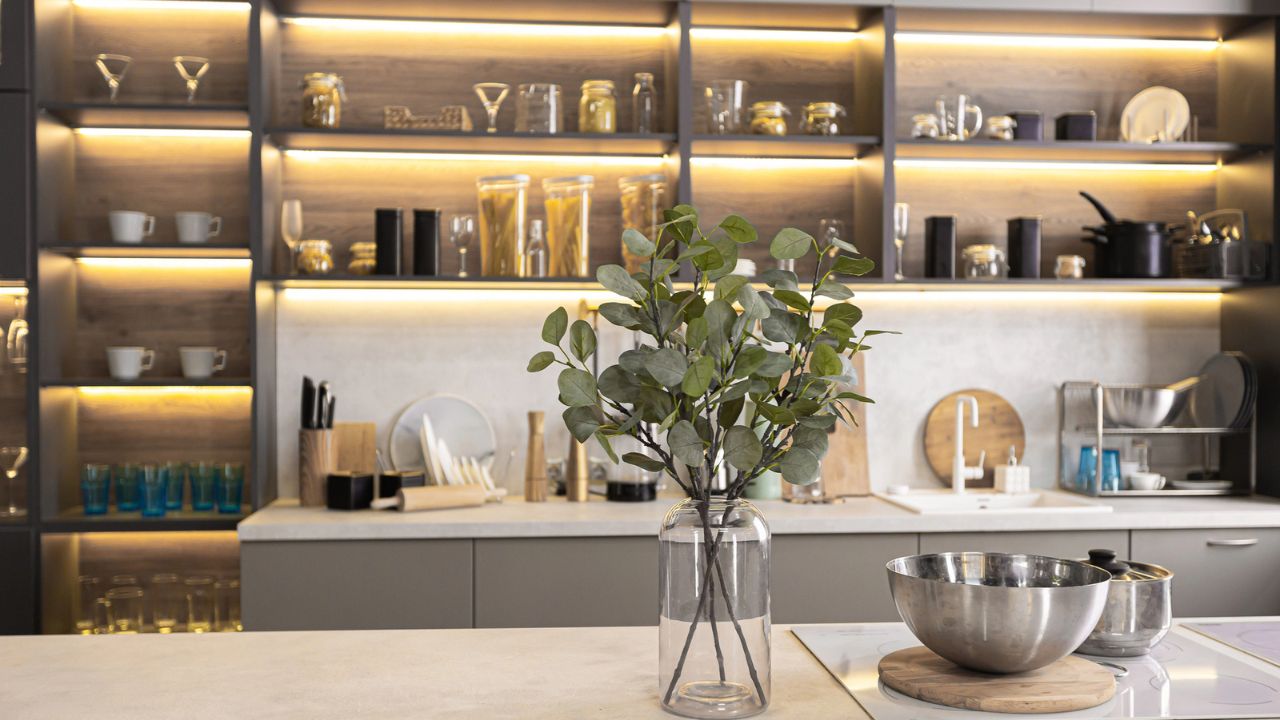
Compact and Efficient Layout
Japanese kitchens are often compact, but they are masters at making the most of every inch. Even in smaller spaces, nothing goes to waste, every corner is carefully considered for maximum utility.
Despite their size, these kitchens are stylish and efficient, balancing functionality with design. This approach not only keeps costs down but also promotes sustainability, as you can achieve a lot with less without sacrificing style or quality.
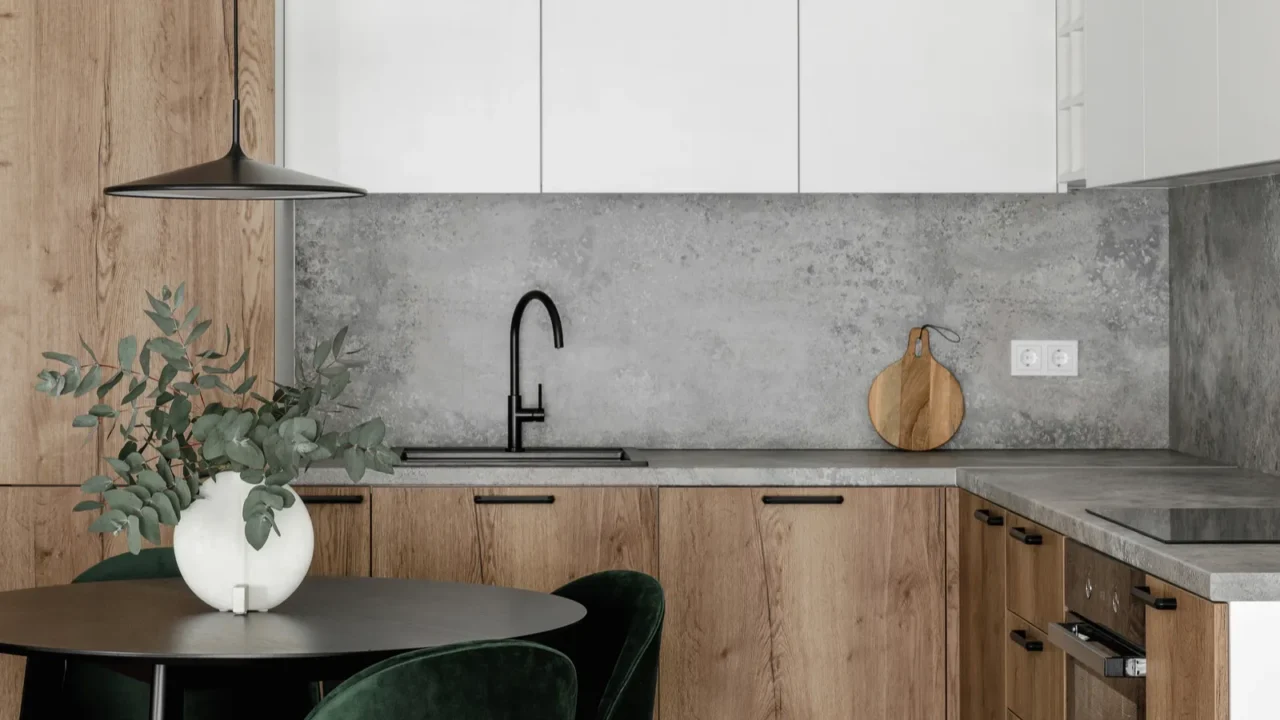
Minimalist Design
Japanese kitchens achieve their elegance through minimalism and simple design. Everything in these kitchens has its own designated spot, which makes it easy to maintain and stay organized.
With everything in its place, the space feels calm and uncluttered. This thoughtful design also ensures a smooth workflow, making cooking more efficient and enjoyable.
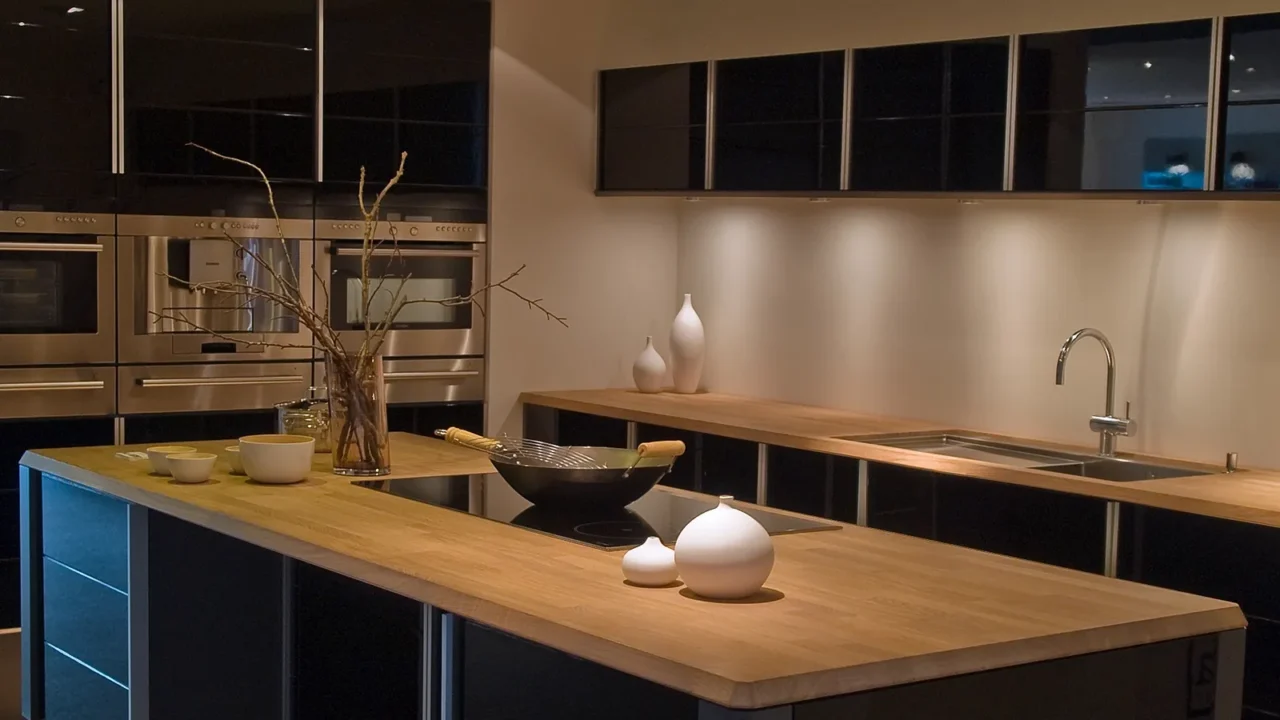
Energy-Saving Lighting
In Japanese kitchens, where the focus is on minimal consumption, it makes perfect sense to use energy-saving lighting. Plus, they provide higher quality lighting, making them both practical and sustainable for any space.
These lights are not only eco-friendly but their soft, warm brightness complements the calm, subtle ambiance of Japanese interiors, enhancing the overall aesthetic without overpowering the space.

Natural Stone Sinks
Natural stone sinks are a popular choice in Japanese kitchens due to their strength and scratch resistance.
With proper care, they can last for decades, often outlasting the home itself. Plus, they are easily repurposed or recycled. When sealed properly, natural stone is non-porous, making it resistant to bacteria and stains.
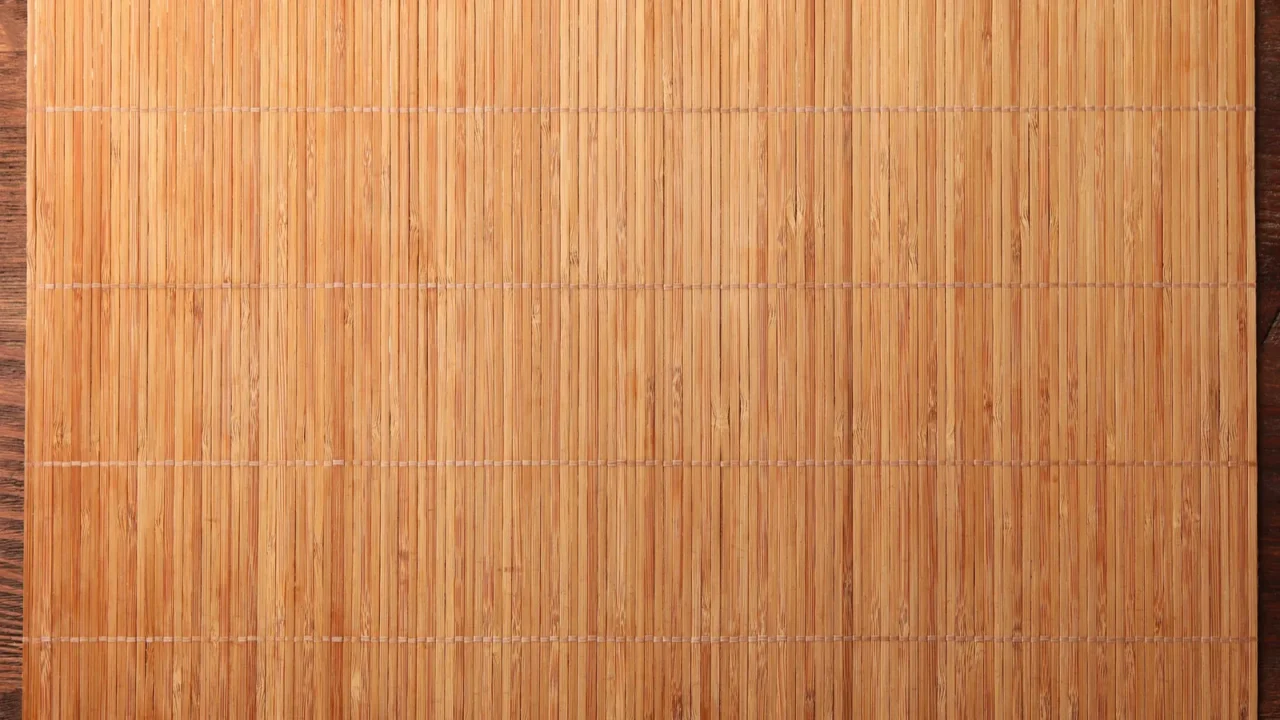
Tatami Mats for Flooring
Tatami mats, traditionally used as flooring in Japanese-style rooms, can bring an authentic Japanese vibe to your kitchen.
They not only protect your floor from stains and spills but also eliminate the need for constant cleanup with tissue paper when accidents happen. Tatami mats are easy to clean and maintain, making them both convenient and classy in a kitchen setting.

Japanese-Inspired Tea Station
Of course, no Japanese kitchen is complete without a tea station! Tea is a staple in Japanese culture, and creating a dedicated space for it is a great way to infuse authentic Japanese style into your kitchen.
Set up a small tea station, complete with decor and a selection of Japanese teas, to turn it into a cozy retreat.
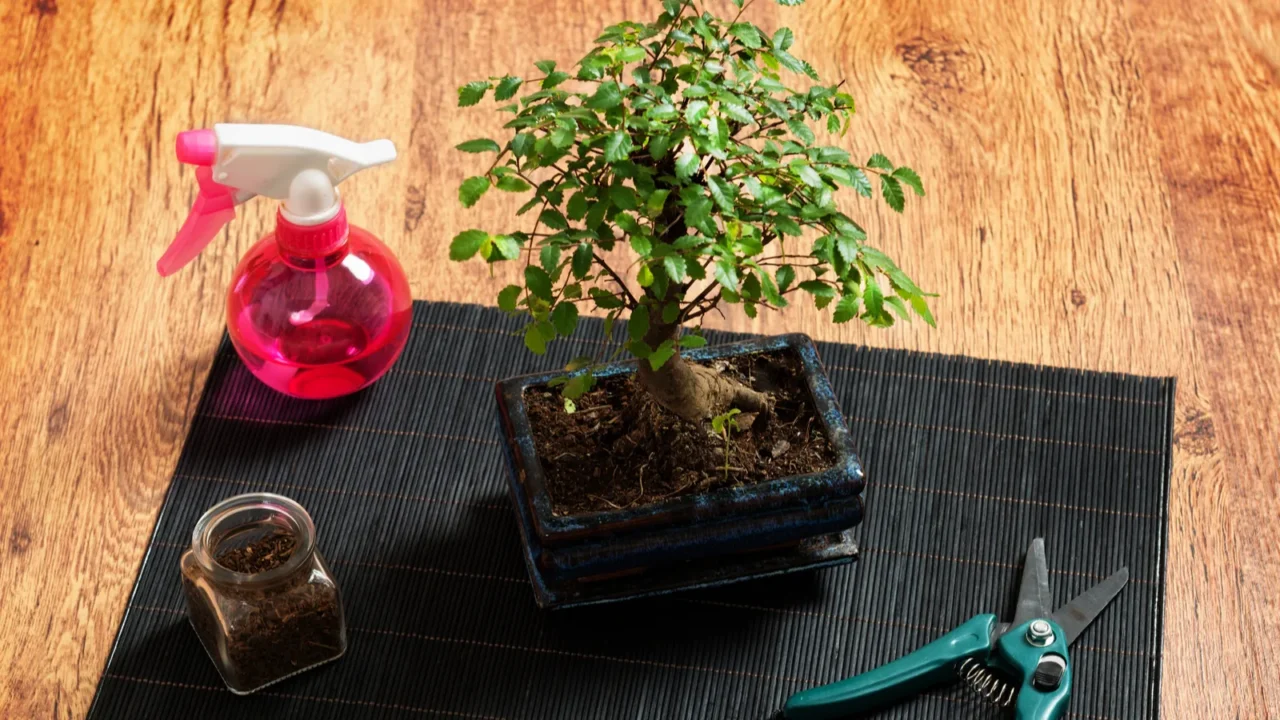
Indoor Bonsai Tree or Plants
Bonsai tree equals Japan, anyone can make this connection, that’s how much it is recognized in Japan. Adding one to your kitchen is a simple way to bring a piece of Japan into your home.
Imagine starting your day by watering your bonsai tree every morning, it’s such a peaceful, meditative way to begin the day. Personally, I think it would be a beautiful habit to have.

Sustainable and Eco-Friendly Appliances
Japan is a truly innovative country, known for its advanced technology and forward-thinking solutions. However, even in ancient times, the Japanese were ahead of the curve when it came to eco-friendly practices.
It’s a mindset that lives on in today’s sleek, energy-efficient designs, seen in appliances like inverter refrigerators and energy-saving rice cookers that blend modern tech with mindful living.
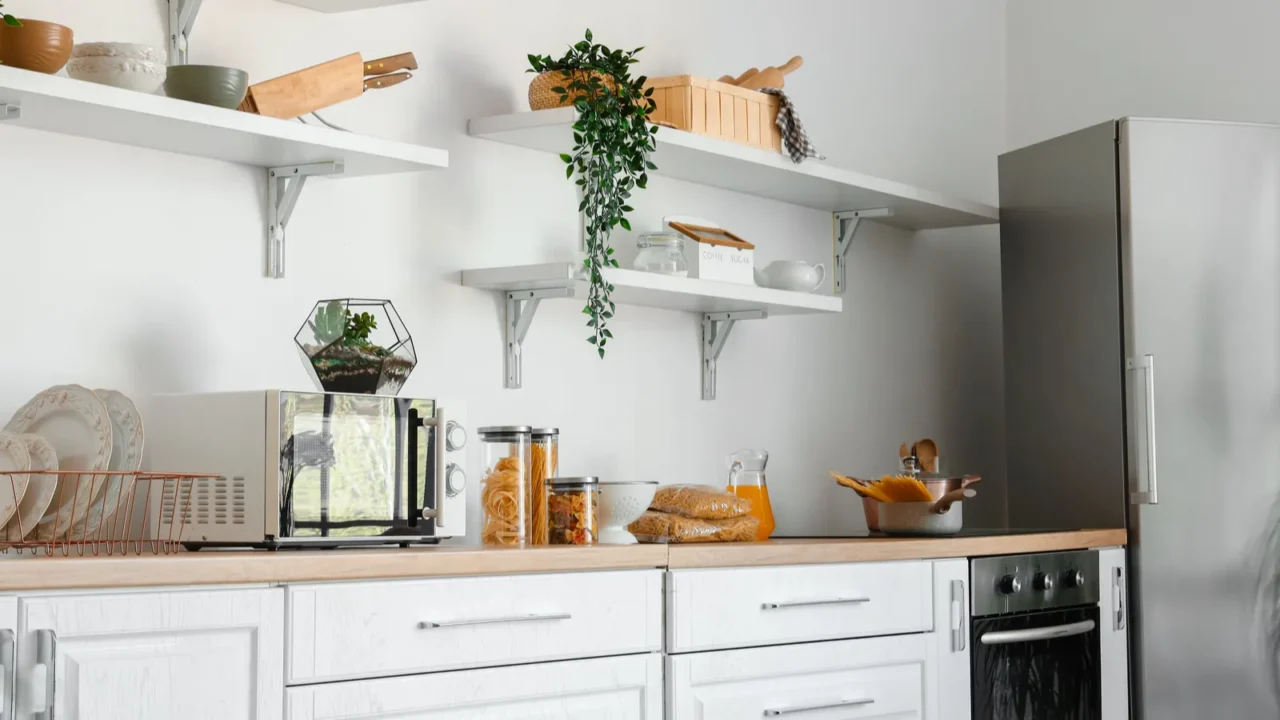
Reclaimed Japanese Teak Open Shelving
In Japanese kitchens, open shelving is a common choice, making use of every inch of available space. It’s a clever way to showcase the beauty and charm of your kitchen.
By adding a few thoughtfully placed décor pieces, especially ones influenced by Japanese culture, you can instantly enhance the entire vibe of your kitchen.

Low Japanese Tables
Low Japanese tables are a unique and functional addition to a kitchen with a Japanese inspired design, enhancing both the room’s sustainability and aesthetic appeal.
These versatile tables can serve multiple purposes, often proving more flexible than traditional dining tables, making them an excellent choice for a minimalist, functional space. If the vibe of low tables speaks to you, unwind in style with Japanese-inspired bedroom that offers more ways to bring calm and simplicity into your home.

Plant-Based Cooking Tools
Often made from non-toxic, biodegradable, and renewable materials, these utensils help reduce reliance on plastics and other synthetic products.
By choosing them, you not only avoid micro plastics from leaching into your food but also make a small yet significant positive impact on the environment. Just like plant-based tools bring intention to cooking, a Japanese cleaning ritual for Zen life shows how to bring that same mindfulness to cleaning.
Which of these Japanese-inspired ideas would you bring into your kitchen? Share your favorite tip or your own green kitchen trick in the comments!
Read More From This Brand:
- Avoid These Mistakes When Going Green
- Going Green? Get These Smart Home Gadgets
- Top Sustainable Brands for a Greener Home
Don’t forget to follow us for more exclusive content right here on MSN.
This slideshow was made with AI assistance and human editing.